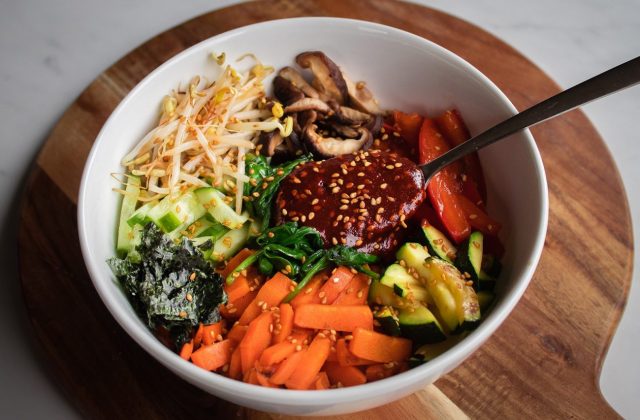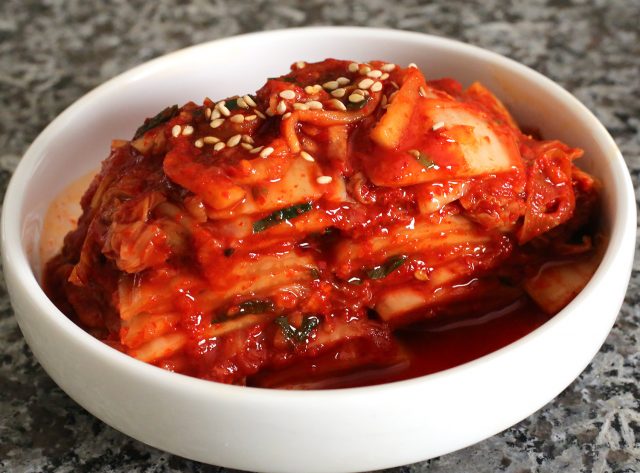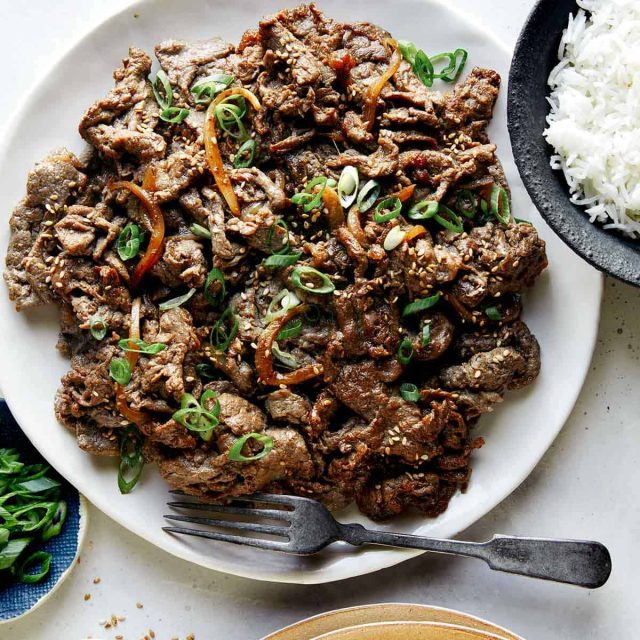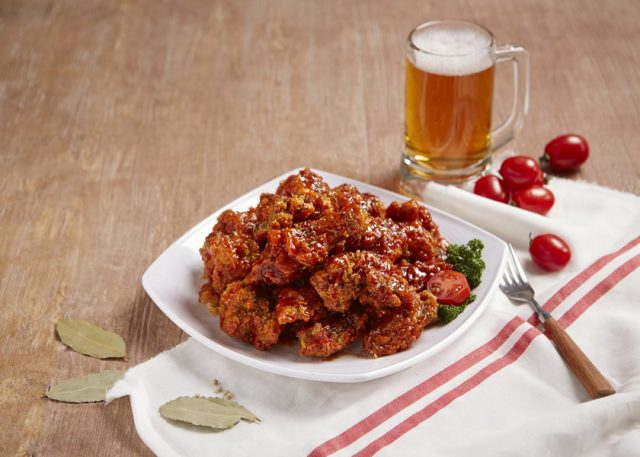Korean cuisine is unique but easy to make at home. It mainly includes stews, rice, and noodle dishes having a combination of different vegetables and meat or seafood. Besides being delicious and wholesome, they are also attractive in appearance. The five-color arrangement of red, yellow, green, white, and black is common in every Korean dish. In addition, the Oriental Rule of Five Flavors, namely, sweet, hot, sour, salt, and bitter, are also present with the inclusion of primary ingredients like garlic, green onions, sesame seeds and oil, dried red chili, rice vinegar, soy sauce, and brown sugar.
Koreans also enjoy their barbequed dishes. Among these, sangyeopsal and bulgogi are the most favored, making them one of the main foods in any special event or celebration. Besides these, their side dishes, including kimchi and oi muchim, are no less tasty and are perfect accompaniments for any Korean main dishes.

A special South Korean dish, bibimbap is a wholesome rice bowl food that is a must-try if visiting Seoul. It can be meat or vegetarian-based, depending on the region. However, the typical version includes a combination of rice, mixed vegetables, beef, topped with an egg and flavored with soy sauce and thick, hot chili paste. Stirring the hot dish thoroughly just before eating helps the flavors blend well. Though it was initially a part of the royal cuisine, it is now a delicious staple dish mostly eaten for lunch or dinner, consisting of a perfect balance of nutrients, flavors, and textures.
Japchae is a traditional noodle dish prepared by stir-frying glass noodles, vegetables, eggs, and beef. The slightly slippery and chewy texture of the noodles, when accompanied with the sweet, savory, and nutty flavors, takes the taste to another level. Though often served as a side dish, japchae can also be enjoyed with rice as a main dish. Initially a part of the royal cuisine, it is mainly eaten at weddings, birthdays, and other special occasions. When served over rice, the dish comes to be called japchae-bap.
A favorite BBQ delicacy in Korea, sangyeopsal is widely enjoyed during social events as it is cooked and eaten simultaneously. A barbeque grill is placed in the middle of the dining table in which chunks of raw pork belly meat are cooked. They are pretty easy to prepare as they don’t undergo the marinating process. Each grilled meat slice is dipped in spicy ssamjang sauce and wrapped in fresh lettuce or perilla leaves along with kimchi, green onions, and grilled onion and garlic.

An iconic Korean finger food, kimchi, dates back around 2000 years ago when it originated in the Shilla Dynasty. Presently, about 200 variations of kimchi exist and much commonly eaten in North Korea. While they enjoy the less spicier and lighter colored kimchi, the South Koreans prefer the spicier and redder version. The preparation of the most usual one includes salting napa cabbages and radish and rubbing them with a paste of traditional red chili pepper called gochugaru, ginger, and garlic. Seafood like brined shrimp or fish sauce made with anchovies also go into it for the pungent and savory flavor. After it undergoes the fermentation process, it turns delicious, with the tangy, spicy, and salty flavors dominating. Kimchi serves as a staple side dish, eaten with every Korean meal, and even goes into the preparation of soups and stews.
Haemul Pajeon is an instant favorite among seafood lovers and one of the must-have foods during Korean Thanksgiving celebration called chueok. It is a pancake dish with a crunchy outer layer having rice, egg, scallion, and seafood like oysters, shrimp, squid, and clams as its main ingredients. The chewy texture of the seafood combined with the overall savory flavor makes it a yummy dish. It is cut into slices before serving and best enjoyed by dipping into a simple sauce made of soy sauce, toasted sesame seeds, and vinegar. Sometimes, a Korean rice wine called Makheolli is also served alongside as an accompaniment.
Gimbap, also called kimbap, is a bite-sized street food that looks much like Japanese sushi rolls. Its preparation consists of sesame oil flavored cooked rice spread evenly on a seaweed sheet. It is topped with ground beef, sautéed vegetables, and yellow pickled radish. The seaweed is then tightly rolled and cut into slices. An attractive and easy to eat food, Gimbap is often preferred as a lunch box delicacy to enjoy on a picnic.
A well-known spicy stew, Sundubu Jjigae has freshly curdled tofu, vegetables, meat, seafood, and chili paste as its main ingredients. It is served hot in a large bowl with a raw egg and scallions placed on top. It’s a comforting food with a combination of flavors, best accompanied with steamed rice and pickled vegetables.
A vegetarian option, doenjang jjigae, is equally mouthwatering and nutritious, having tofu and soybean paste as its main ingredients. The hearty and flavorful stew is often enjoyed as a breakfast dish.
Tteokbokki or ddukbokki is a popular Korean street food having a distinctive red-orange appearance. It is made by cooking steamed, cylindrical rice cakes with fish cakes and scallions in a red chili sauce. The sweet and spicy flavors, along with soft and chewy textures, make one crave more tteokbokki.
An ox bone soup, Seolleongtang is a common winter delicacy made in every Korean household. Different parts of ox bones, especially the marrow and feet, are simmered for hours until the soup turns into a milky white broth. Seasonings of salt and pepper, along with some additions of noodles and chopped green onions make it simple yet flavorful. It is teamed with rice and other sides, or at times the rice is also directly added into the soup.

Bulgogi is a delectable Korean BBQ beef dish that has gained popularity worldwide. Thin pieces of beef are marinated and then grilled on a charcoal burner that gives it its sweet and smoky flavors. Many prefer pan-frying to allow the meat to slowly cook in its juices alongside other vegetables like sliced onions, green peppers, and garlic. Besides being enjoyed throughout the year, it is a sought-after dish eaten during Christmas celebrations. Tender and juicy, Bulgogi has also won the hearts of many all over the globe. It was voted the world’s 23rd best food by the readers of CNN Travel in 2011.
While drinking is an essential part of socializing in Korean culture, many simple hangover cures also exist alongside. One such remedy is having a bowl of steaming Haejangguk or hangover stew. Many consider it to be one of the weirdest foods of Korea as it has congealed ox blood as its primary ingredient. However, when it is simmered in the beef broth along with vegetables like cabbage, beans sprout, and radish, it makes the stew delicious, adding an earthy tone. As slurping a bowl of it provides comfort, it is one of the sought-after hangover dishes here.
If craving a nutritious vegetarian dish in Korea, Kongguksu should be included in your list. While ‘kong’ means soybean, ‘guksu’ translates into noodles. It is a textured noodle food served in a cold soybean broth. Typically enjoyed during summers, Kongguksu is a refreshing soup having the perfect combination of mild, nutty flavors of soybean alongside a creamy texture.
Jjajangmyeon is a famous dish consisting of noodles in black bean sauce. Though it is a part of Chinese cuisine, the Koreans have adopted it and made a thicker and tastier version of it. The salty and earthy flavors with spicy notes and dense, chewy textures make it a favorite among many who enjoy it at least once a week.
Ganjang gejang or soy sauce crab is a lip-smacking Korean dish. The crab marinated in soy sauce is usually served cold with rice. The combination is so addictive that the dish has earned the nickname of ‘rice thief’ as you will be craving more rice to have with the flavorful crab.
Mulhoe is a Korean raw fish soup originating in the Gyeongbuk region within the southeastern coast of Korea. As it is easy to make and does not require cooking, it was earlier a sought-after meal for fishermen. Now, Mulhoe is a well-loved refreshing soup enjoyed mainly in summer. It is typically made with freshly caught fish, thinly sliced and mixed in cold water, thick red chili paste, and soju, a traditional Korean drink. The spicy, sour, and slightly sweet flavors make it delectable, especially when served with noodles.
Oi Muchim is a cucumber side dish that pairs well with almost every Korean main dish. While ‘oi’ in the Korean language means cucumber, ‘muchim’ translates to seasoned, justifying the ingredients and preparation method of the dish. Hence, it consists of thinly sliced cucumber mixed with traditional red chili pepper flakes called gochugaru, garlic, scallions, sesame seeds and oil, salt, and vinegar. It is spicy, tangy, and slightly sweet, best accompanied with any rice, noodle, or BBQ dish.

The word ‘chimaek’ is not a distinct dish by itself, but comprises a combination of chicken and maekju or beer, referring to the yummy pairing of fried chicken and beer. A favorite match for all food lovers, chimaek is relished by most Koreans over the weekend.
Tteokguk is a rice cake soup traditionally eaten during Korean Lunar New Year, and even as a part of birthday celebrations. The white color and cylindrical shapes of rice cakes symbolize a fresh start to the New Year and a wish to have a prosperous one. The rice cake, along with other ingredients like eggs, green onions, roasted dried seaweed, and sometimes dumplings are cooked in a meat-based broth. A hearty and satisfying dish, tteokguk is no more seasonal but eaten throughout the year.
A heathy Korean side dish, sigeumchi-namul has fresh spinach as its main ingredient. It is blanched for a short time to remove the raw leafy taste and attain a little crispy texture. They are rinsed in cold water and seasoned with soy sauce, toasted sesame seeds, garlic, and sesame oil are added. It is slightly salty and garlicky in taste, often a part of the everyday meal. Add a little gochujang, a traditional red chili pepper paste if preferring a spicy kick to your Korean spinach salad.
A simple yet mouthwatering potato side dish, gamja jorim consists of baby potatoes braised in soy sauce. While the potatoes attain a soft and tender inner texture, the exterior is slightly chewy. Sweet and salty, gamja jorim is an ideal accompaniment to steamed rice.
Hobak Bokkeum is a tasty zucchini side dish that goes well with any Korean meal, especially in summer when it is found in abundance. It is easy to make with ingredients like onion, garlic, sesame seeds and oil, and saeujeot or salted and fermented shrimp. It is stir-fried and served with cooked rice. The savory taste of hobak bokkeum also makes it a preferable component of bibimbap topping.
Gyeran mari or Korean egg roll is a delicious and easy to make egg side dish. It is prepared with beaten eggs cooked in thin layers in a pan. Other ingredients like scallions, carrots, and seaweed also go into it. Each of the layers are rolled until it forms a log. The cooking method is much similar to the Japanese dish, tamogoyaki, though the taste is different. Gyeran mari is soft, smooth, fluffy, and savory, an excellent option for lunchbox item. Also, it is an ideal side dish, teaming up well with any Korean main dish.
These delectable Korean dishes are a must-have for those who enjoy exploring something new and unique in food. The different flavors and textures add a pleasurable experience to the taste buds. The wide array of side dishes are themselves a delight, made from various ingredients and providing diverse tastes. Besides the ones in the list, some others worth mentioning are Kongnamool (Korean soyabean sprouts), Musaengchae (Korean spicy radish salad), and Myeolchi Bokkeum (stir-fried dried anchovies). Apart from the savory cuisine, Korean desserts are equally delicious and worth trying.
TOP PICKS
Best Korean Side Dishes: Oi Muchim, Japchae, Khimchi
Best Korean Christmas Dishes: Bulgogi, Khimchi, Japchae
Best Korean Traditional Dishes: Bibimbap, Bulgogi, Tteokbokki
Best Korean Street Food: Tteokbokki, Gimbap, Chimaek
Best Korean Snack Food: Sundubu Jigae, Tteokbokki, Japchae
Best Korean Vegetarian Dishes: Oi Muchim, Sigeumchi-Namul, Kongguksu